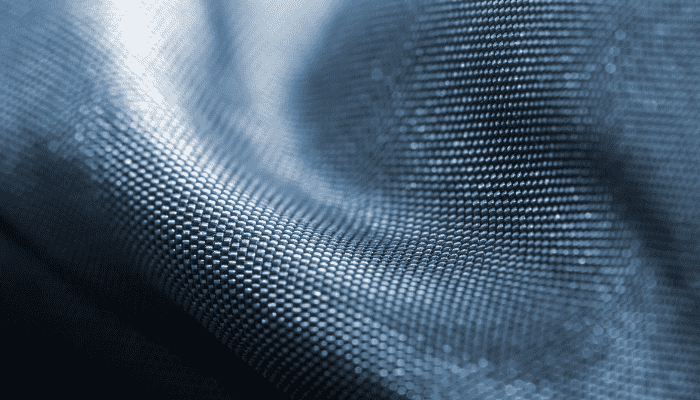In the competitive world of backpack manufacturing, two common production models, Original Equipment Manufacturer (OEM) and Original Design Manufacturer (ODM), play crucial roles. Understanding these two models’ differences, advantages, and considerations is essential for backpack brands and entrepreneurs. This comprehensive guide will explore the ins and outs of backpack OEM and ODM.
1. Definitions of OEM and ODM
· OEM (Original Equipment Manufacturer): A brand company hands over the design and specifications to a manufacturer in the OEM model. The manufacturer then focuses on the production process, and the final product bears the brand company’s name or trademark. For example, a well-known outdoor brand might provide detailed designs and material requirements to a factory, which then manufactures the backpacks precisely according to those instructions.
· ODM (Original Design Manufacturer): With ODM, the manufacturer takes on both the production and design tasks. The manufacturer develops a design concept, and the final product is branded with the name of the client company. For instance, an ODM factory might come up with a trendy and functional backpack design and offer it to multiple brands. The brands can then choose to use this design and have the factory produce it under their labels.
2. Differences between OEM and ODM
· Design Control: In OEM, the customer is in charge of the design or provides detailed specifications. The manufacturer simply follows these guidelines. In contrast, ODM manufacturers are the ones who create and propose design solutions. They have the creative freedom to develop new and innovative backpack designs.
· Production Process: OEM mainly concentrates on the production process itself, such as optimizing manufacturing techniques and ensuring quality control during production. ODM, on the other hand, is involved in a broader scope of product development and innovation. This includes researching market trends, conceptualizing new features, and testing prototypes.
· Brand Attribution: In the OEM model, the brand is solely owned by the customer company. The manufacturer is just a production partner. However, in ODM, although the final product is branded by the client, the design and production are initiated and led by the supplier.
3. Advantages and Disadvantages of OEM and ODM
· OEM Advantages:
· Full Product Control: The brand has complete authority over the product’s design and features, ensuring it aligns perfectly with its brand image and customer expectations.
· Customization: Brands can customize every aspect of the backpack, from the choice of materials to the specific compartments and accessories, to meet their unique marketing and functional requirements.
· Quality and Efficiency Monitoring: Brands can closely supervise the manufacturing process to maintain high-quality standards and production efficiency. They can also build long-term relationships with reliable suppliers to ensure consistency.
· OEM Disadvantages:
· Design and R&D Burden: The brand has to handle all the design research and development work, which requires significant investment in terms of time, money, and expertise.
· Communication Challenges: When there are complex customization requirements, it can lead to lengthy communication and coordination between the brand and the manufacturer. This may result in delays and potential misunderstandings.
· ODM Advantages:
· Cost and Time Savings: By relying on the ODM manufacturer’s design capabilities, brands can save on design costs and reduce the time to market. This is especially beneficial for brands that lack in-house design teams or want to quickly introduce new products.
· Market-Forward Designs: ODM manufacturers often have a pulse on the latest market trends and consumer preferences. Their designs may have a competitive edge and better resonate with the market, potentially increasing sales.
· ODM Disadvantages:
· Limited Design Control: The brand has less say in the design process. They have to choose from the designs offered by the ODM manufacturer, which might not always perfectly match their vision.
· Customization Constraints: While ODM manufacturers can make some modifications, the level of customization may be restricted compared to the OEM model. Brands might have to compromise on certain features or design elements.
4. Consideration Factors for Choosing OEM or ODM
· Market Demand and Brand Positioning: If a brand aims to stand out with unique and innovative designs and target a niche market that values novelty, ODM might be a better choice. On the other hand, if the focus is on mass production with established designs and cost efficiency, OEM could be more suitable. For example, a luxury backpack brand might prefer ODM to get exclusive and trendy designs, while a budget-friendly brand might opt for OEM to control costs and customize basic designs.
· Production Capacity and Technical Level: Brands need to assess their technical capabilities. If they have strong in-house design and engineering teams, OEM allows them to fully utilize their expertise. However, if they lack such resources, ODM can provide access to the manufacturer’s technical know-how and production facilities.
· Cost and Time: OEM typically requires a larger upfront investment in design and development and may take longer to finalize the product. ODM offers a quicker solution in terms of design and can save costs in the early stages. Brands need to balance their budget and time-to-market requirements when making a decision.
5. Applications of OEM and ODM in the Backpack Industry
· OEM in the Backpack Industry: Many large backpack brands use OEM to create custom-made backpacks. They can specify the durability requirements, such as using high-strength fabrics and reinforced stitching. They can also determine the exact layout of compartments, the type of zippers and buckles, and even the color and logo placement. For example, a professional hiking backpack brand might work with an OEM manufacturer to produce backpacks with specialized hydration bladder compartments and adjustable suspension systems.
· ODM in the Backpack Industry: Backpack brands often turn to ODM producers to develop new styles. The ODM manufacturer might introduce innovative features like built-in charging ports for electronic devices or convertible designs that can transform from a backpack to a duffel bag. This helps brands keep up with the latest fashion and functionality trends without the need for extensive in-house design efforts.
6. Case Studies
· OEM Backpack Brand Case: Consider a high-end backpack brand that prides itself on its craftsmanship and unique designs. It uses OEM to collaborate with a manufacturer that has excellent production capabilities and a reputation for quality. The brand provides detailed design blueprints, including the use of premium leather, custom hardware, and intricate stitching patterns. The manufacturer then brings these designs to life, ensuring that each backpack meets the brand’s strict quality standards.
· ODM Backpack Brand Case: There is a mid-sized backpack brand that wants to expand its product line quickly. It partners with an ODM manufacturer. The ODM presents a range of trendy designs, including a lightweight backpack with a foldable feature for easy storage. The brand selects this design and modifies it slightly to fit its brand identity. By using ODM, the brand saves on design costs and can introduce the new product to the market in a shorter time frame, enhancing its market competitiveness.
7. How to Choose the Right Cooperation Model
· Brand’s Demand Assessment: A small startup brand with a limited budget and a focus on cost-effective production might lean towards OEM to have more control over costs and gradually build its brand identity. A well-established brand looking to introduce a revolutionary new product line might consider ODM to leverage the manufacturer’s design innovation. Factors such as brand size, target market, R&D capabilities, and available budget all play a role in determining the most suitable model.
· Partner Selection: When evaluating OEM and ODM suppliers, key factors to consider include their production capacity. Can they handle the required volume? Their design innovation ability – do they have a track record of creating successful and trendy designs? And their quality control system – how do they ensure consistent product quality? Brands should also look at the supplier’s reputation, delivery times, and after-sales service.
8. Future Trends
· Backpack Industry’s OEM and ODM Development Trends: As consumers increasingly demand personalized and eco-friendly products, ODM is likely to gain more prominence. Manufacturers will need to focus on sustainable materials and offer more customization options in their designs. For example, using recycled fabrics and allowing customers to choose personalized embroidery or color combinations.
· Digitalization and Customization: Digital technologies like 3D design and AI are set to revolutionize both OEM and ODM. 3D design allows for more accurate prototyping and visualization, reducing errors and speeding up the design process. AI can be used for predicting market trends, optimizing production schedules, and even enabling customers to create their custom backpack designs online, which can then be produced through either OEM or ODM models.
In conclusion, understanding the nuances of OEM and ODM in the backpack industry is vital for brands and manufacturers alike. By carefully considering the various factors and trends, they can make informed decisions that lead to successful product launches, satisfied customers, and a competitive edge in the market.



